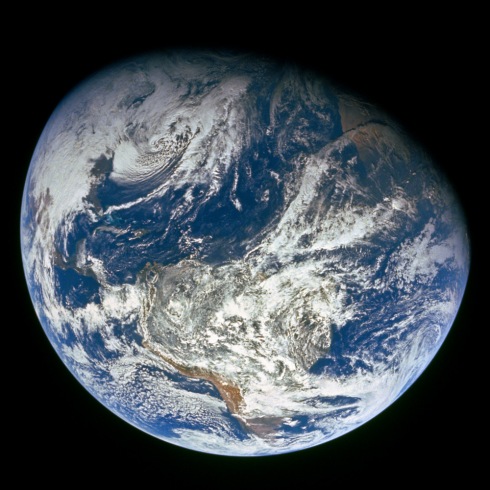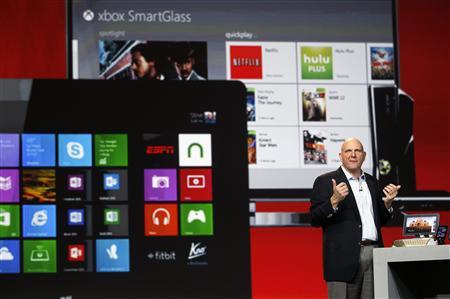There were a lot of things that launched the environmental movement 40-some years ago—the pea-soup shroud of smog that used to hang over L.A., the sight of Ohio’s Cuyahoga River on fire. But nothing quite matched the power of the pictures beamed back to Earth by the Apollo astronauts on their way to the moon. We’d been seeing our home planet from low-Earth orbit for a number of years by then. What was always missing were human eyes that got far enough away so that the planet’s entire, 360-degree face fit into frame. Once we had that perspective, we saw our world anew: a tiny, fragile bauble in an infinity of blackness, something manifestly worth taking better care of.

2012. A 'Blue Marble' image of the Earth taken from the VIIRS instrument aboard NASA's most recently launched Earth-observing satellite—Suomi NPP. This composite image uses a number of swaths of the Earth's surface.
Of all the pictures shot on all the moon trips, it was an image from the final one—Apollo 17—that made the greatest cultural impression. Dubbed ”Blue Marble,” the picture which mission records suggest was taken by lunar module pilot Jack Schmitt) shows Africa and the Middle East, largely unobscured by clouds, from a distance of 28,000 miles (45,000 km).

2012. A view of the eastern hemisphere of earth from space. NASA's second 'Blue Marble' image was created from data acquired by a new instrument aboard the Earth-observing satellite Suomi NPP, the Visible Infrared Imaging Radiometer Suite (VIIRS).
Now, NASA has recreated the picture, without getting any farther than 581 miles (931 km) away, thanks to the Suomi National Polar-orbiting Satellite (Suomi NPP), which orbits the planet pole-to-pole rather than east to west. The relatively low altitude (compared to the Apollos at least) would make a full planetary profile impossible, but the ship was able to capture different high-def swatches of the planet and knit them together into a single image. To capture that shot for real, a spacecraft would have to be 7,918 miles (12,743 km) away.

1972. View of the Earth as seen by the Apollo 17 crew traveling toward the moon. This translunar coast photograph extends from the Mediterranean Sea area to the Antarctica south polar ice cap. This is the first time the Apollo trajectory made it possible to photograph the south polar ice cap. Note the heavy cloud cover in the Southern Hemisphere. Almost the entire coastline of Africa is clearly visible. The Arabian Peninsula can be seen at the northeastern edge of Africa. The large island off the coast of Africa is the Malagasy Republic. The Asian mainland is on the horizon toward the northeast.
While the satellite has never journeyed nearly so far, it did do Apollo 17 one better, taking portrait-quality images of both Earthly hemispheres, including North America. Somewhere down there, too tiny to see, is an L.A. with relatively clear skies and a Cuyahoga River now largely free of filth—and entirely free of flame. Sometimes it just takes a good look at ourselves to make us behave a whole lot better.
Author : Syed Rajowan
Source : TIME





































